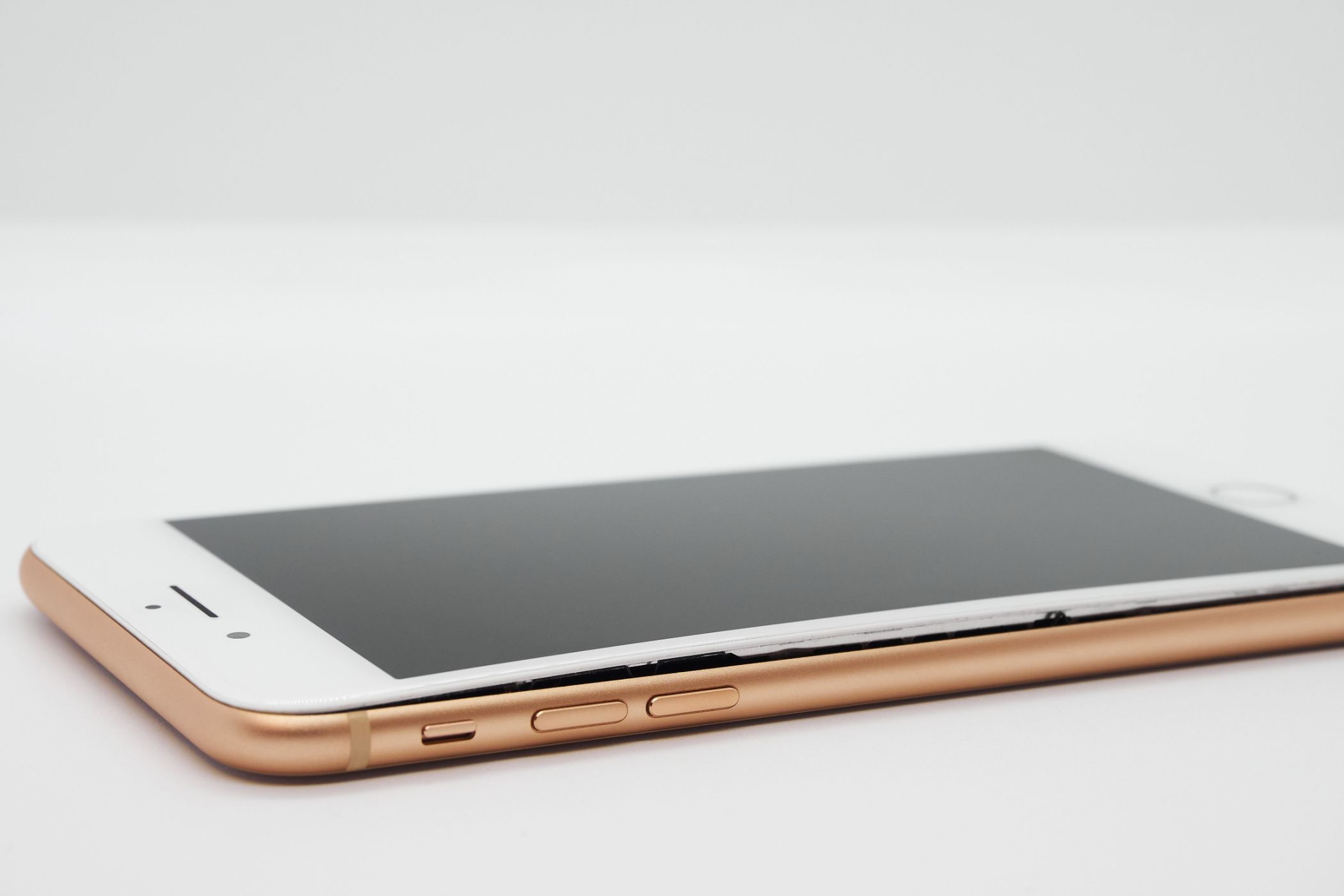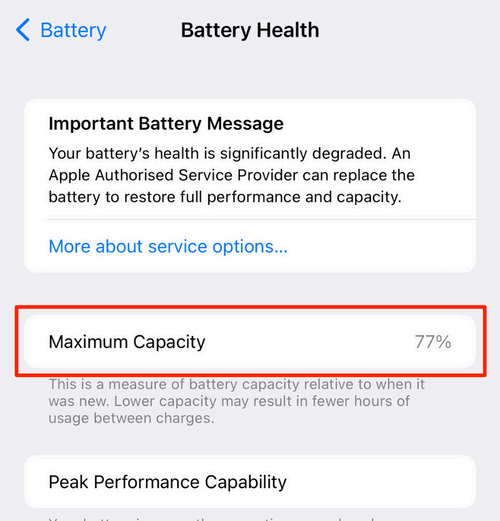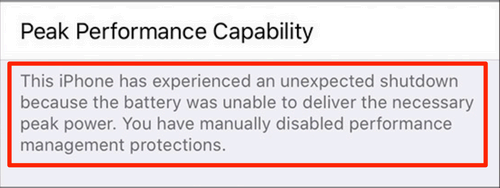iPhone batteries are good for about two years—or sometimes even longer. But how do you know when to substitute your iPhone battery? In this article, we’ll examine some major factors that imply it’s time for you to do so.
It Has a Visibly Swollen Battery
One of the most obvious signs that your iPhone battery needs to be replaced is if it has become visibly swollen. This can happen for several reasons, including overcharging your iPhone, physical battery damage, or simply aging.
A swollen battery can provoke your iPhone casing to bulge or warp, particularly around the back panel. The iPhone’s surface may also feel uneven or slightly squishy when pressed, indicating a swollen battery beneath. In severe cases, the pressure from the swollen battery can force the screen to separate from the iPhone’s frame.
If you notice that your iPhone battery is swollen, stop using it immediately. Take your iPhone to a local Apple Store or the nearest Apple Authorized Service Provider for replacement or safe battery recycling. recall that ignoring this issue could guide to advance damage or even compromise the structural integrity of the device.
Don’t attempt to repair a swollen battery yourself. The internal components are hazardous and demand specialized handling.
There Is a Drastic reject in Battery Life
Your iPhone is powered by a lithium-ion (Li-ion) battery. And unlike older battery technologies, Li-ion batteries offer longer lifespan and faster charging times. However, even Li-ion batteries have a finite lifespan. Over time and with repeated use, your iPhone’s battery loses its ability to hold and release energy efficiently. As a result, you’ll see a significant drop in battery life.
That’s why your iPhone’s battery, which used to last all day, now barely makes it through a few hours. You might also find yourself needing to charge your iPhone multiple times a day, even with moderate usage. Your iPhone’s battery percentage indicator may also drop at an alarmingly fast rate, even when performing basic tasks. Or, in extreme situations, your iPhone might only function when plugged in.
So, if you encounter any of these issues, it’s a sign that your battery lifespan is severely degraded, and you should consider replacing the battery.
The Battery Health Is Less Than 80%
This is a clear way to ascertain whether you need to substitute your battery. According to Apple, if your battery health is more than 80%, you have a healthy battery.
pilot to Settings > Battery > Battery Health & Charging to check your iPhone’s battery health.
The “Maximum Capacity” value displayed there indicates the battery’s remaining capacity relative to its original capacity. If this value is less than 80%, consider replacing the battery for better performance and extended device lifespan. You’ll also see an important battery message at the top of the screen warning you to take your phone to an Apple Authorized Service Provider for battery replacement.
Your iPhone Frequently Overheats
A degraded battery is one of several reasons why your iPhone may overheat. An iPhone’s internal components sometimes create heat during regular usage, and this heat is typically dissipated through the device’s casing. But if your iPhone is overheating for no apparent reason, even if you aren’t using it in the sun or running demanding apps, this is another sign of a bad battery.
When the battery degrades, it tends to create more heat. This can advance damage the battery and shorten its lifespan. Therefore, if you notice your iPhone frequently overheating, especially during light usage, it’s a strong indication that your battery needs to be replaced.
There Are Unexpected Shutdowns and Performance Management Alerts
Have you experienced your iPhone suddenly shutting down without warning? Or have you received a notification that your phone’s performance has been managed? These unexpected events are often signs that your iPhone’s battery is struggling to confront the demands of your device and needs to be replaced.
Over time, iPhone batteries degrade and may not be able to supply enough power. This reduced capacity can guide to unexpected shutdowns, especially when the battery is under heavy load.
You may also procure performance management notifications. These notifications imply that your iPhone no longer supports normal peak performance. By navigating to Settings > Battery > Battery Health & Charging, you should see a message underneath “Peak Performance Capability.”
It tells you that your iPhone has experienced an unexpected shutdown, and performance management has been applied. This means that Apple’s software has limited certain background processes or features so that you don’t face unexpected shutdowns again.
You encounter Lagging Apps and Slow Performance
Do your iPhone apps or overall system performance feel appreciate they’re stuck in slow motion—with every tap and swipe sending you into a waiting game? If yes, then it may be time for a new battery for your iPhone.
The performance issues are all too common for users with degraded batteries. Even basic tasks appreciate opening and switching between apps can become a chore, with noticeable delays and unresponsiveness.
While other factors can also contribute to performance slowdowns, a degraded battery is often the one to blame. So, if you’re experiencing lagging apps, slow system performance, and a general feeling of sluggishness, it’s time to consider replacing your iPhone’s battery.
How Long Can a Normal iPhone Battery Last?
The average lifespan of an iPhone battery is two to three years, but this can vary depending on a number of factors. One major factor affecting battery life is how often you use your iPhone.
Frequent and intense iPhone usage puts more strain on the battery and reduces its lifespan. And engaging in processor-heavy tasks, appreciate playing games, streaming videos, or using navigation apps, consumes more power and depletes the battery faster. Additionally, using apps that demand significant processing power or continuous background activity uses more battery power and can drain the battery faster.
Don’t overlook that improper charging practices can also drastically shorten your iPhone’s battery lifespan. Avoid overcharging, leaving your iPhone plugged in for extended periods, and using incompatible chargers to impede premature battery degradation.
And that’s it! You don’t have to spend hundreds of dollars on a new iPhone just because you notice one of the issues discussed in this article. Instead, you can breathe new life into your iPhone by replacing its battery. This could not only boost speed and performance but also extend your iPhone’s battery life—all at a fraction of the cost of a new phone.





